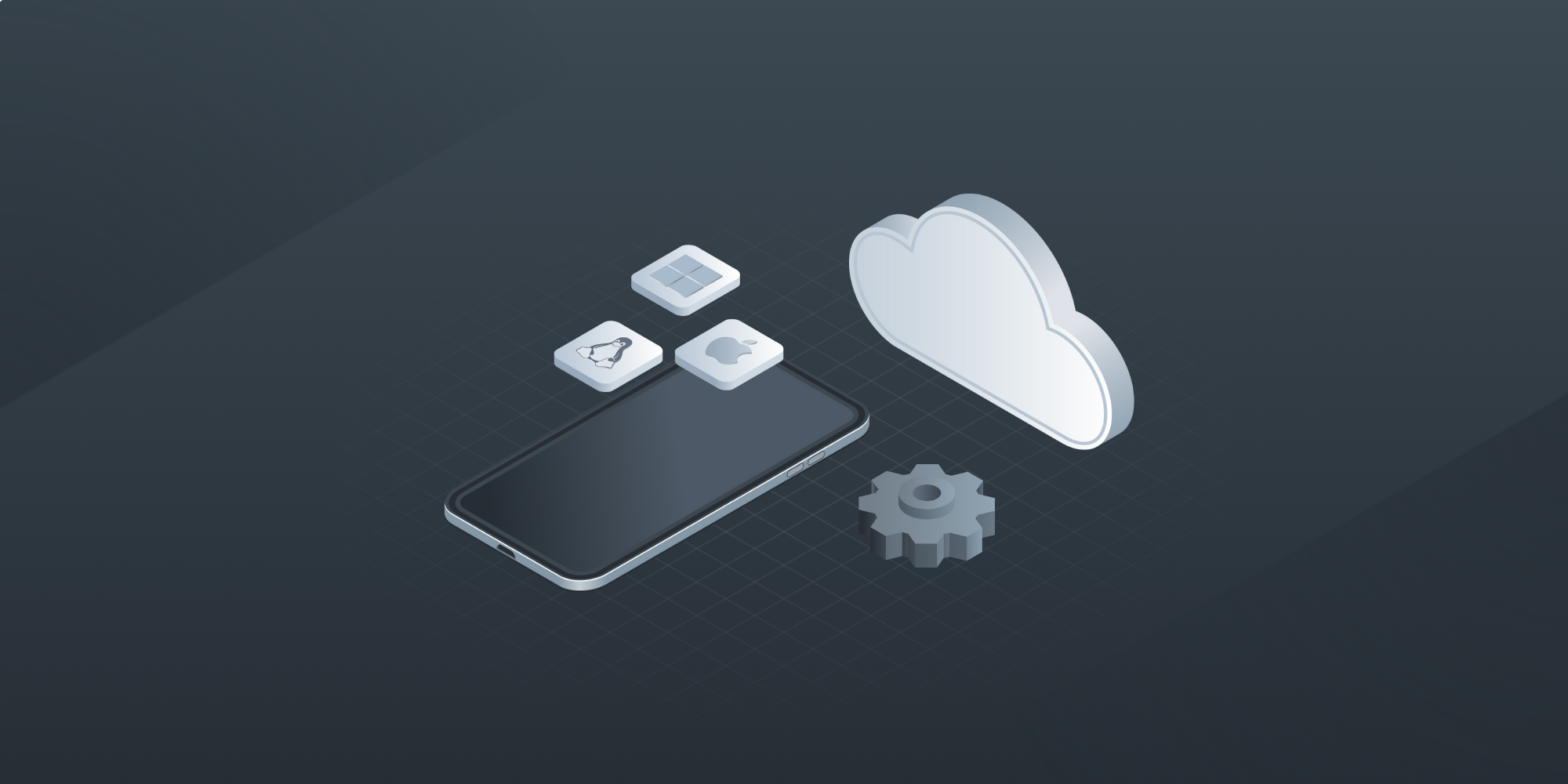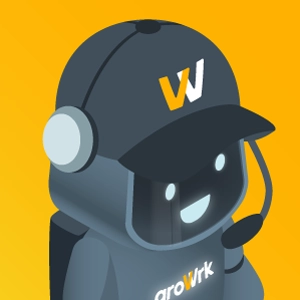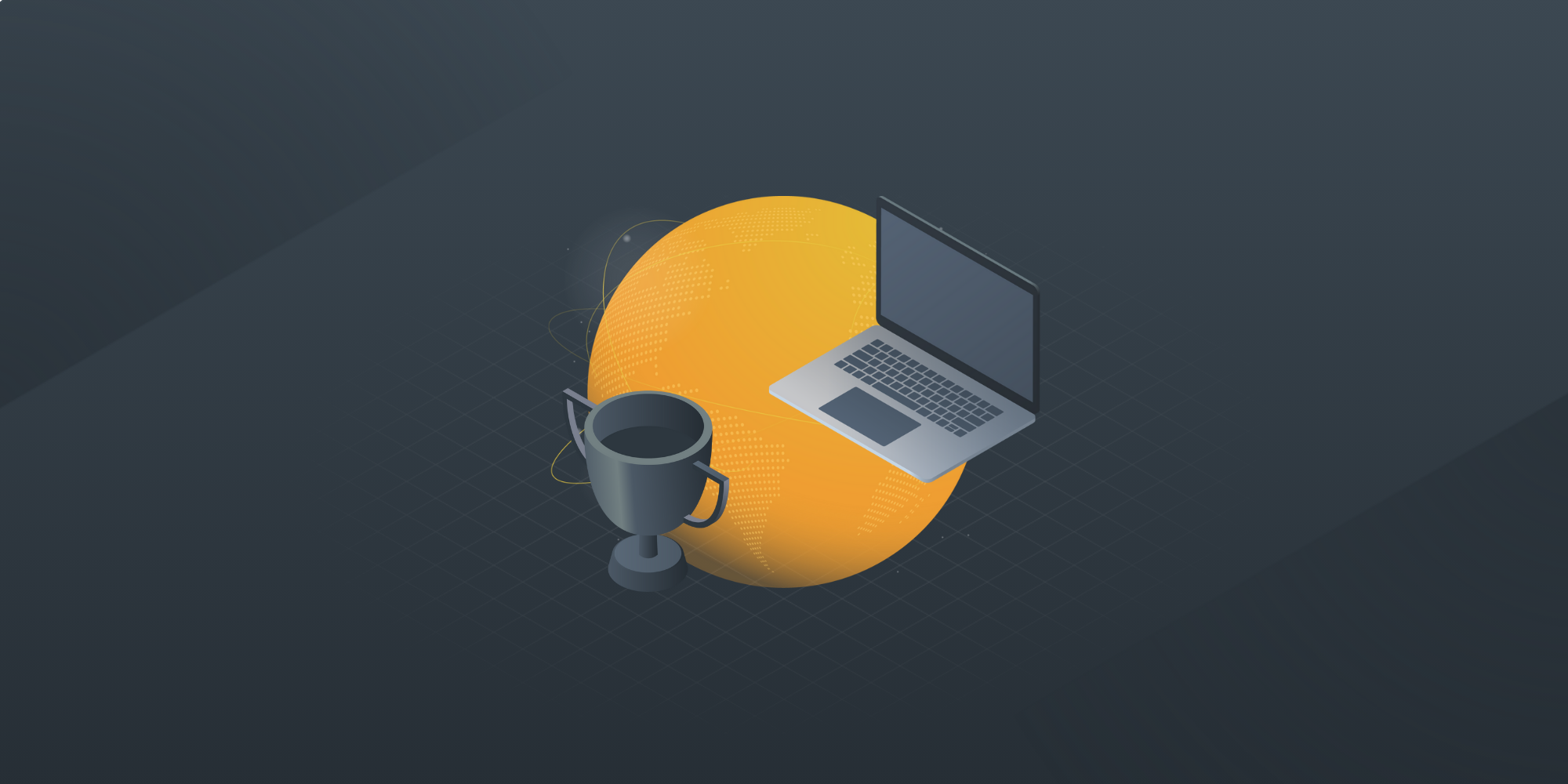Complete remote IT device management guide for scalable operations
 Zachary Trudeau
Zachary Trudeau
Remote IoT device management allows organizations to centrally monitor, configure, and maintain connected devices across multiple sites without ever touching the hardware. This approach streamlines large-scale IoT operations, improves uptime, and strengthens device security across distributed environments.
This step-by-step tutorial walks through how to build and manage a scalable remote IoT management system, from initial platform setup to advanced functions like device provisioning, authentication, monitoring, automated updates, and security configuration.
Key takeaways
-
Centralized management is essential: Remote IoT device management allows organizations to control, monitor, and update thousands of connected devices securely and efficiently from a single platform.
-
Automation drives scalability: Automated provisioning, OTA updates, and real-time monitoring reduce manual effort, prevent downtime, and improve operational reliability.
-
Security must be continuous: End-to-end encryption, strong authentication, and regular audits protect data and maintain compliance across large, distributed IoT ecosystems.
Understanding remote IoT device management

Remote IoT device management is the practice of centrally monitoring, configuring, and maintaining connected devices through a cloud-based or on-premises platform. Instead of requiring physical access, administrators can remotely update settings, deploy firmware, and monitor performance across thousands of devices from a single interface.
At its core, remote management depends on interoperable communication protocols that allow diverse IoT devices, from sensors to gateways, to exchange data securely and reliably. These protocols form the backbone of scalable IoT ecosystems, ensuring smooth coordination across networks with different hardware and software standards.
This centralized model allows IT and engineering teams to:
-
Maintain device health and uptime with real-time status tracking and alerts.
-
Enforce security policies and configuration standards across distributed environments.
-
Optimize performance and compliance without manual, on-site maintenance.
Remote IoT management platforms bring all these functions together, enabling unified configuration, monitoring, and troubleshooting for large-scale deployments across multiple locations. The result is a more efficient, secure, and cost-effective way to operate connected systems at scale.
Core management components
At the heart of every IoT device management system are the core components that enable secure onboarding, consistent configuration, and reliable performance monitoring across all connected devices.
- Device provisioning: Provisioning is the first step in establishing trust between a device and your network. It includes registration, authentication, and initial configuration, ensuring that only authorized devices can connect. Each device is assigned a unique digital identity and secure communication credentials.
- Configuration management: Once devices are provisioned, administrators must manage their settings, policies, and operational parameters. Centralized configuration ensures consistent standards across your entire fleet and supports bulk updates when new security or performance requirements arise.
- Ongoing lifecycle maintenance: Proper onboarding and configuration feed directly into device lifecycle management. This ensures devices receive timely updates, patches, and monitoring for the duration of their operation, minimizing downtime and reducing security risk.
Routine configuration reviews and automated policy enforcement are key to maintaining compliance, security, and scalability as the number of devices grows.
Communication architecture
Effective remote IoT device management relies on a robust communication architecture that enables secure, bidirectional data exchange between devices and the management platform.
- Cloud-to-device communication: This channel allows administrators to send commands, configurations, and firmware updates directly from the management platform to connected devices. It’s the mechanism that powers remote control, automated policy enforcement, and large-scale updates.
- Device-to-cloud communication: Devices continuously send telemetry, performance metrics, and status reports back to the platform. This real-time data flow allows teams to monitor device health, detect anomalies, and trigger automated responses to potential issues.
- Remote access and troubleshooting: Secure remote access lets teams diagnose and resolve issues without visiting physical sites. Administrators can push patches, change configurations, or perform resets over encrypted connections, dramatically reducing maintenance costs.
Together, these communication layers create the backbone for scalable, automated IoT management, ensuring reliable performance across distributed networks and variable connectivity conditions.
Essential platform features and selection criteria
.jpg?width=600&height=300&name=remote%20IoT%20device%20management%20guide%20(1).jpg)
A reliable IoT device management platform must deliver the tools and scalability needed to handle thousands of devices securely and efficiently. The best platforms combine automation, security, and analytics to simplify management and reduce manual effort.
Must-have management features
Every effective IoT device management platform must provide a core set of capabilities that enable secure, scalable, and automated operations.
- Device authentication and access control: Prevent unauthorized access using certificate-based authentication, security tokens, or multi-factor protocols. Automated credential management ensures ongoing compliance and minimizes connection risks.
- Configuration management: Remotely adjust device parameters, apply policies, and group similar devices for bulk actions. Centralized configuration reduces manual errors and keeps performance consistent across the fleet.
- Over-the-Air (OTA) firmware updates: Push firmware upgrades, bug fixes, and security patches without physical access. OTA updates are vital for maintaining security and functionality across thousands of devices.
- Real-time monitoring and alerts: Continuously track device health, network connectivity, and performance metrics. Automated alerting enables quick responses to anomalies or downtime events, improving reliability.
- Analytics and reporting: Leverage built-in analytics to identify performance trends, detect inefficiencies, and plan maintenance proactively.
Together, these management features provide a foundation for scalable, automated, and secure IoT operations, allowing organizations to maintain complete control from a single platform.
Security and compliance requirements
Security is the backbone of any remote IoT device management system. As devices connect from multiple locations, maintaining secure communication, access control, and data integrity becomes critical.
A robust platform should provide the following safeguards:
-
Encrypted communication: Use end-to-end encryption (TLS/SSL) for all device-to-cloud and cloud-to-device transmissions. Encrypted channels prevent data interception and maintain confidentiality across distributed networks.
-
Certificate-based authentication: Implement digital certificates for device identity verification. Enable automatic certificate renewal and rotation to maintain trust without manual intervention. Backup authentication mechanisms should be in place to prevent connection loss during credential changes.
-
Role-Based Access Control (RBAC): Assign granular permissions to administrators and operators. Limit access to sensitive functions, ensuring only authorized users can modify configurations or deploy updates.
-
Security auditing and compliance monitoring: Regularly audit access logs and device activity to detect unusual behavior or policy violations. Ensure the platform complies with relevant standards such as ISO/IEC 27001, GDPR, or NIST guidelines.
These practices are especially critical for IoT-enabled security devices like smart cameras, sensors, and door locks, where compromised systems can expose physical and digital vulnerabilities.
Establishing layered security across your IoT ecosystem not only protects data but also ensures regulatory compliance and long-term operational trust.
Step-by-step implementation guide
.jpg?width=600&height=300&name=remote%20IoT%20device%20management%20guide%20(4).jpg)
Implementing remote IoT device management requires a structured, secure, and scalable process. The following steps outline a practical roadmap that applies to any major IoT management platform.
Step 1: Register and authenticate devices
Start by registering every device in your management system or inventory database. Assign each a unique identifier and secure credentials to establish trust and enable authenticated communication.
Best practice: Use certificate-based authentication and automate onboarding through APIs or batch scripts to simplify large-scale deployments.
Step 2: Organize devices into logical groups
Group devices by location, model, or function to streamline oversight. Logical grouping simplifies bulk configuration, region-specific updates, and policy enforcement. It also supports more precise reporting and troubleshooting as your deployment grows.
Step 3: Manage configuration and device state
Maintain a centralized record of device configurations and operational status, a “digital twin” that mirrors real-time conditions. This ensures updates, patches, and configurations remain synchronized, even for devices that go temporarily offline.
Step 4: Implement Over-the-Air (OTA) updates
Enable OTA updates to push firmware patches, security fixes, and new features remotely.
Best practices:
-
Roll out updates in controlled phases to reduce risk.
-
Monitor update success rates before scaling.
-
Keep rollback plans ready for failed deployments.
Step 5: Set up monitoring and automated alerts
Use continuous monitoring to track uptime, connectivity, and performance metrics. Configure automated alerts to flag issues like failed updates or abnormal device behavior before they escalate.
Centralized dashboards provide visibility across your entire device network, improving reliability and reducing downtime.
Step 6: Enforce security and access policies
Apply security standards such as encryption, role-based access control (RBAC), and periodic audits. Rotate credentials regularly and maintain compliance with frameworks like GDPR, ISO/IEC 27001, or NIST.
Bringing it all together
Following this structured workflow helps organizations build a resilient and scalable IoT management framework.
Centralized registration, configuration, and monitoring create a foundation for automation, while OTA updates and strong security practices ensure long-term reliability, visibility, and compliance.
Platform comparison: Cloud-based vs On-premises vs Hybrid solutions
.jpg?width=600&height=300&name=remote%20IoT%20device%20management%20guide%20(8).jpg)
| Feature | Cloud-based | On-premises | Hybrid or custom deployment |
|---|---|---|---|
| Device capacity | Virtually unlimited; scales on demand | Limited by local infrastructure capacity | Flexible, local control for latency-sensitive workloads, cloud for scalability |
| Security model | Managed encryption, automated certificate rotation, and cloud-based identity management | Full control over security policies and authentication | Mix of local and cloud-based security layers with configurable controls |
| Over-the-Air (OTA) updates | Cloud-scheduled updates with version tracking and rollback | Manually triggered or locally deployed updates | Combined OTA management, local for immediate updates, cloud for synchronization |
| Integration | Connects easily to analytics, automation, and enterprise IT systems via APIs | Integrates deeply with internal infrastructure and proprietary systems | Blends local gateways with centralized orchestration and analytics |
| Scalability | Rapid global expansion with minimal maintenance overhead | Constrained by physical hardware and internal resources | Dynamic scaling through both cloud and edge devices |
| Ideal use case | Global IoT fleets needing broad accessibility and centralized management | Regulated or high-security environments requiring full data ownership | Organizations seeking balance between local control and cloud efficiency |
Choosing the right model
Each deployment approach offers unique strengths:
-
Cloud-based systems are best for organizations prioritizing scalability, automation, and global accessibility.
-
On-premises models suit industries with strict compliance, latency, or data sovereignty requirements.
-
Hybrid solutions deliver the flexibility to combine local reliability with cloud-powered analytics and scalability.
No matter which model you choose, the end goal remains the same: secure, efficient, and scalable IoT management that enables complete oversight and control from anywhere.
IoT device maintenance
.jpg?width=600&height=300&name=remote%20IoT%20device%20management%20guide%20(3).jpg)
Effective maintenance is a cornerstone of remote IoT device management, ensuring every connected device remains secure, reliable, and compliant throughout its lifecycle. As IoT networks expand, manual maintenance becomes impractical, automation and centralized visibility are essential.
Modern IoT management platforms enable organizations to:
-
Automate firmware updates and patches to close security gaps and maintain performance without on-site intervention.
-
Continuously monitor device health and key performance indicators (KPIs) such as uptime, response times, and power usage.
-
Trigger proactive alerts when anomalies occur, allowing teams to resolve issues before they cause downtime.
Automated maintenance workflows keep devices on the latest, most secure versions, helping teams stay compliant with evolving security and industry regulations. This proactive approach also cuts operational costs, prevents outages, and reduces human error.
By adopting centralized monitoring and predictive maintenance strategies, organizations can maintain optimal performance across even the most distributed IoT environments, boosting efficiency, uptime, and ROI across the entire device fleet.
IoT device decommissioning
.jpg?width=600&height=300&name=remote%20IoT%20device%20management%20guide%20(2).jpg)
Device decommissioning marks the final stage of the IoT device lifecycle, ensuring that retired devices are removed securely, compliantly, and without leaving behind sensitive data or open connections.
Modern IoT management platforms simplify this process by allowing administrators to:
-
Remotely revoke credentials and network access to prevent unauthorized use.
-
Wipe residual data and apply encryption before disposal or recycling.
-
Log decommissioning activity for complete auditability and compliance tracking.
Remote decommissioning is especially critical in large or geographically distributed deployments where manual retrieval is impractical. A structured, software-driven approach ensures that each device is retired in a controlled, verifiable, and compliant manner, reducing security exposure and supporting data protection standards like GDPR, ISO 27001, and NIST.
By embedding secure decommissioning workflows into your IoT management strategy, you maintain ecosystem integrity, protect sensitive information, and close potential attack vectors before they become liabilities.
Common implementation challenges and solutions
.jpg?width=600&height=300&name=remote%20IoT%20device%20management%20guide%20(5).jpg)
Even the best-planned IoT deployments encounter technical challenges. Addressing these early helps ensure stable, secure, and scalable remote management. Below are the three most common issues and practical ways to solve them.
| Challenge | Solution |
|---|---|
| 1. Device authentication failures | Automate certificate renewal and create backup authentication mechanisms to prevent downtime during credential updates. Configure renewal at least 30 days before expiration and verify secondary authentication paths through testing. |
| 2. Network connectivity issues | Enable offline functionality and implement retry logic with exponential backoff for intermittent networks. Store essential configuration data locally and use multiple network interfaces for redundancy. |
| 3. Firmware update failures | Deploy updates gradually to small device batches, monitor performance for 24–48 hours, and keep rollback firmware available. Use automated rollback triggers if update errors are detected. |
By proactively implementing these safeguards, organizations can minimize downtime, reduce maintenance costs, and ensure reliable, secure IoT operations, even at global scale.
Scalable operations
.jpg?width=600&height=300&name=remote%20IoT%20device%20management%20guide%20(6).jpg)
As IoT ecosystems expand from dozens to thousands of connected devices, scalability becomes mission-critical. Manual management simply can’t keep pace with the demands of distributed environments. Modern IoT device management platforms solve this by combining automation, centralized visibility, and intelligent workflows that scale effortlessly.
A scalable IoT management system enables organizations to:
-
Monitor, configure, and update devices across multiple sites from a single dashboard.
-
Automate routine processes such as firmware updates, provisioning, and policy enforcement.
-
Apply bulk configurations and remote controls to maintain consistency and compliance across global fleets.
-
Leverage real-time analytics to detect issues early, optimize performance, and plan maintenance more efficiently.
Key enablers of scalable operations include automated onboarding, role-based access control (RBAC), and encrypted communication, ensuring new devices join securely and stay compliant. This approach minimizes manual intervention, cuts costs, and reduces risk without sacrificing control.
Platforms such as AWS IoT Device Management, Azure IoT Hub, and Google Cloud IoT Core demonstrate these capabilities, offering automated provisioning, over-the-air updates, and real-time monitoring through unified cloud interfaces.
Ultimately, scalable IoT operations depend on automation, centralized management, and continuous monitoring. By leveraging the right platform, organizations can keep distributed devices secure, compliant, and high-performing, supporting business growth without overwhelming IT resources.
IoT device management best practices
.jpg?width=600&height=300&name=remote%20IoT%20device%20management%20guide%20(7).jpg)
Implementing IoT device management at scale requires a disciplined approach rooted in security, automation, and proactive monitoring. These best practices ensure your connected ecosystem stays resilient, compliant, and cost-effective.
Prioritize security from onboarding to decommissioning
- Use end-to-end encryption, certificate-based authentication, and role-based access control (RBAC).
- Rotate credentials regularly and perform security audits to maintain compliance.
Automate routine maintenance
- Schedule automatic firmware updates, patching, and performance checks.
- Implement predictive maintenance to resolve issues before they cause downtime.
Centralize monitoring and control
- Manage all devices through a unified dashboard for full visibility.
- Configure alerts and performance thresholds to detect anomalies early.
Integrate with existing IT systems
- Connect IoT management platforms with ERP, analytics, or MDM tools to ensure seamless data flow and consistent operations.
Standardize provisioning and configuration
- Establish automated onboarding workflows for consistent device setup.
- Maintain configuration templates for scalability and policy enforcement.
Measure and optimize continuously
- Track key performance indicators (KPIs) such as uptime, latency, and update success rates.
- Use analytics to refine processes and improve device lifecycle performance.
By following these practices, organizations can manage complex IoT deployments with minimal manual effort, enhancing security, reliability, and operational efficiency across every stage of the device lifecycle.
Why businesses choose GroWrk for IoT device management
Managing IoT devices across distributed environments requires more than just software, it demands a partner built for global scalability, automation, and security. With a unified platform that supports the entire IT and IoT lifecycle, GroWrk helps organizations simplify complex operations while maintaining control, compliance, and performance across every connected asset.
Here’s how GroWrk helps you manage IoT devices smarter:
-
Global coverage: Manage, monitor, and recover devices in 150+ countries with end-to-end logistics and local compliance built in.
-
Enterprise-grade security: Certified data handling, role-based access controls, and encrypted operations protect your network at every stage.
-
Automation-ready platform: Automate provisioning, configuration, firmware updates, and decommissioning for thousands of devices, no manual touch required.
-
Unified visibility: Get real-time tracking, health monitoring, and lifecycle insights through one centralized dashboard.
-
Sustainable operations: Support circular IT practices with device reuse, certified data wiping, and eco-friendly recycling.
-
Seamless integration: Connect easily with MDM, IoT, and enterprise systems to maintain consistent workflows and security standards.
-
AI-powered support: GroWrk’s GroWbot provides instant 24/7 assistance for device issues, setup, and troubleshooting, reducing IT workload and downtime.
With GroWrk, your organization gains more than visibility, you gain control, automation, and strategic intelligence across your entire device network. Book a demo today to scale device management securely and efficiently across the world.
Frequently Asked Questions
What is remote IoT device management?
Remote IoT device management is the centralized control and monitoring of connected devices across distributed locations. It allows administrators to configure, update, and secure IoT devices from a unified platform, without needing physical access to each unit.
Why is IoT device management important?
It ensures every connected device operates securely and efficiently throughout its lifecycle. With automation and centralized visibility, businesses can minimize downtime, prevent data breaches, and maintain compliance across large-scale IoT deployments.
What are the main components of an IoT management platform?
A complete IoT management platform includes device provisioning, configuration management, firmware updates (OTA), monitoring dashboards, and security tools for encryption and access control.
How does remote management improve scalability?
By automating device onboarding, configuration, and updates, organizations can manage thousands of devices at once. Cloud-based dashboards and APIs make it easy to deploy changes, track health, and respond to issues in real time.
What security measures are essential for IoT management?
Key protections include certificate-based authentication, encrypted communication (TLS/SSL), role-based access control (RBAC), and automated patching to eliminate vulnerabilities before exploitation.
Can IoT devices be managed across multiple locations?
Yes. Modern platforms like GroWrk and AWS IoT Device Management are built for global operations, allowing IT teams to manage, update, and secure devices across multiple regions from a single interface.
How do OTA (Over-the-Air) updates work in IoT management?
OTA updates push new firmware, bug fixes, or security patches directly to devices via the cloud. This process eliminates manual intervention and keeps every device up to date with minimal downtime.
What are common challenges in remote IoT management?
The most common issues include authentication failures, network connectivity drops, and failed firmware updates. Each can be mitigated with automated recovery workflows, redundant connections, and pre-update validation.
How does IoT device decommissioning work?
When devices reach end-of-life, they are securely removed from the network. Credentials are revoked, data is wiped, and decommissioning activity is logged for compliance—ensuring no residual access or security risk.
What is the difference between cloud-based and on-premises IoT management?
Cloud-based platforms provide scalability and remote access, while on-premises systems offer full data control and are often used in regulated industries. Hybrid models combine both, balancing flexibility and compliance.






